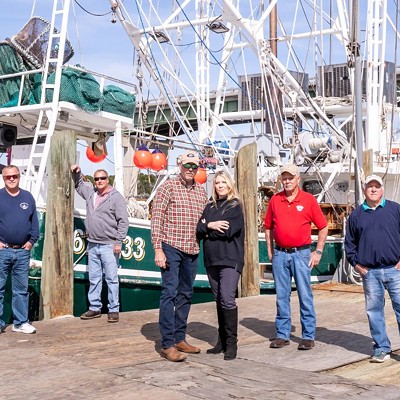Mercury Rising
[
{
"name": "Air - MedRect Combo - Inline Content 1",
"component": "14680855",
"insertPoint": "7",
"requiredCountToDisplay": "5",
"parentWrapperClass": "fdn-ads-inline-content-block"
},{
"name": "Air - MedRect Combo - Inline Content 2",
"component": "14680856",
"insertPoint": "15",
"requiredCountToDisplay": "9",
"parentWrapperClass": "fdn-ads-inline-content-block"
},{
"name": "Air - SVP - Leaderboard - Inline Content - 2",
"component": "16852291",
"insertPoint": "10",
"requiredCountToDisplay": "10",
"parentWrapperClass": "fdn-ads-inline-content-block"
},{
"name": "Air - SVP - Leaderboard - Inline Content - 3",
"component": "16852292",
"insertPoint": "20",
"requiredCountToDisplay": "18",
"parentWrapperClass": "fdn-ads-inline-content-block"
},{
"name": "Air - SVP - Leaderboard - Inline Content - 1",
"component": "16852290",
"insertPoint": "25",
"requiredCountToDisplay": "22",
"parentWrapperClass": "fdn-ads-inline-content-block"
}
]
Oh, things ain't what they used to be, no, no/Oil wasted on the ocean and upon our seas/Fish full of mercury -- Marvin Gaye, 1971
Lake Lanier, mecca for fishermen in the top half of the state, is the single most polluted body of water in Georgia when it comes to mercury.
There are six different species of fish swimming in those waters that are unhealthy to eat more than once a week because elevated amounts of mercury have been found in their flesh.
In the Ogeechee River, which runs southeastward from Greene County to Savannah, largemouth bass are so loaded with mercury that it's unhealthy to eat them more than once a month.
In fact, of the 63 lakes that the state Environmental Protection Division monitors, 33 are home to fish that shouldn't be eaten regularly because of mercury contamination. And of the state's 128 rivers, 70 have mercury warnings.
But you don't have to pull a fish out of a Georgia waterway to find a contaminated meal. Unhealthy levels of mercury also are present in the canned and fresh fish at grocery stores and restaurants. And the scary thing about eating too much mercury is that it attacks the central nervous system and leaves children with severe learning disabilities.
The info on the particular pervasiveness of mercury in Georgia comes from a book the EPD publishes to warn fishermen about the dangers of eating their catch. Strangely, the authors wrote in the introduction that no one knows where mercury in fish comes from.
That's simply not true.
Seven years ago, the U.S. Environmental Protection Agency concluded that coal-fired power plants are responsible for 33 percent of all mercury pollution nationwide. In Georgia, the numbers are even more startling. Georgia Power and its sister company, Savannah Electric, emit more than two-thirds of the state's mercury emissions.
The two companies send 2,461 pounds of mercury into Georgia's air every year, compared to 1,112 pounds from all other mercury producers combined, according to the state's Toxic Release Inventory.
Most of the mercury that coal-burning plants emit eventually winds up in a river, lake, stream or the ocean, either because it lands there or is carried there by rain runoff. Because mercury doesn't break down after it's been absorbed by plants and ingested by animals, concentrations grow higher in animals further up the food chain.
That's why fish at the top of their food chains -- tuna, shark and freshwater bass -- are higher in mercury.
There are no laws currently on the books limiting the amount of mercury that power plants and other industrial sources can emit. The EPA is attempting to change that, although there's plenty of skepticism over how successful the agency will be.
As you read this, the EPA has closed the public comment phase of its rulemaking process and will begin finalizing the nation's first regulations aimed at reducing mercury pollution.
So far, the opinion of the medical and environmental communities is that the proposed mercury rule is too weak to protect the public, and that the rulemaking process was heavily influenced by Big Power.
Entire sections of the EPA's rule were identical to research papers written by a group that represents 20 power companies, according to a Los Angeles Times investigation. Seven U.S. senators urged EPA Inspector General Nikki Tinsley in an April 12 letter to investigate whether the mercury rule was subject to undue industry influence.
Meanwhile, the research behind the dangers of mercury emissions is getting stronger.
A National Research Council study of mercury emissions in 2000 found that 60,000 children could develop learning disabilities because their mothers ate contaminated fish. The U.S. Food and Drug Administration now advises pregnant women to eat no shark, swordfish, king mackerel or tilefish, and to restrict the amount of canned tuna they eat to no more than two cans per week.
And the state EPD recently strengthened its mercury warnings for king mackerel caught off the Georgia coast. The warning states that no mackerel longer than 39 inches is safe for anyone to eat.
Early in the EPA's rulemaking process, Administrator Michael Leavitt had assured critics that the new rule would reduce mercury emissions by 70 percent in 15 years. But he's since hinted it might take longer. At the same time, scientific and environmental groups argue that technology currently exists to reduce mercury emissions 90 percent by 2008.
But the EPA isn't considering that level of reduction -- to the possible detriment of mercury's most fragile victims.
The administration has backed away from its long-standing commitment to children's health, says Dr. Howard Frumkin, chairman of Emory University's Rollins School of Public Health and a member of the EPA's Children's Health Protection Advisory Committee.
Mercury pollution at a glance
People are exposed to mercury mainly by eating fish. The EPA and 43 states have issued advisories warning people, especially women and children, to avoid or limit eating local fish because of mercury. But even with these warnings, the Centers For Disease Control and Prevention and the EPA estimate that 1 out of 6 U.S. women of childbearing age have unsafe levels of mercury in their blood.
Coal-fired power plants are the largest major source of mercury emissions into the nations air, polluting our air, land, water, and wildlife with approximately 100,000 lbs. of mercury each year.
Annual additions of mercury as little as 1/70th of a teaspoon can contaminate a 20-acre lake to the point that the fish are unsafe to eat.
Pollution from power plants travels great distances 40 percent of it goes 600 miles or more beyond the location of emission.
At least a dozen coal-burning power plants degrading coastal Georgia are within that range, spread across Georgia and three other states: Alabama, Tennessee, and South Carolina.
-- Derived in part from a statement by the National Wildlife Federation
Activist:Mercurys a threat to both health & business
Mercury is the most common and arguably the most dangerous pollutant commonly found in Georgia's contaminated fish. This material is a harmful neuro-toxin that damages the nervous system, causing learning disabilities, loss of memory, and in extreme cases, death.
Mercury accumulates in the body over time older fish have larger amounts, and the more of it that individuals are exposed to, no matter how infrequently, the greater their risk of serious harm to them and their offspring.
There are at least 50 known mercury contamination problems within Georgia's coastal waters, and likely many more that have yet to be identified. Based on DNRs fish consumption advisory handbook (quaintly masked under a title that could be a cookbook, Guidelines for Eating Fish from Georgia Waters), the number of known mercury-contaminated fish in coastal Georgia is about seven times greater in proportion to geographic area than for Georgia overall.
This is because microbes that flourish in coastal rivers (with naturally higher acidity and suspended organic materials) convert this pollutant to methyl mercury, a form rapidly absorbed into the tissue of fish and all who eat it.
Reducing mercury pollution will improve public health and also help sustain our billion-dollar-a-year nature-based economy here in coastal Georgia. By allowing industries that generate this toxin to continue emitting it above acceptable limits, recently proposed policy is essentially shifting the costs of industrial operations onto the public, with dire health implications, especially for children of mothers who have been exposed to mercury.
This unconscionable pollution will undoubtedly leave thousands of children behind for life.
At the same time, policies that allow dirty power plants to contaminate fish are a direct threat to nature-based businesses here including recreational fishing worth over $500 million annually, according to a recent study done by Georgia Southern University for DNR.
This is one of many environmental issues where conservationists, public health advocates, and small business owners share good reasons to reform policies that now favor the narrow interests of a few major corporations at the expense of many other groups.
Until the Southern Company and other pollution giants recognize their responsibility to the public by recalculating their bottom lines, the power behind power production will remain dangerously at odds with the reality in which we all must live.
The writer of this opinion, David Kyler, is executive director of Center for a Sustainable Coast on St. Simons Island.
Lake Lanier, mecca for fishermen in the top half of the state, is the single most polluted body of water in Georgia when it comes to mercury.
There are six different species of fish swimming in those waters that are unhealthy to eat more than once a week because elevated amounts of mercury have been found in their flesh.
In the Ogeechee River, which runs southeastward from Greene County to Savannah, largemouth bass are so loaded with mercury that it's unhealthy to eat them more than once a month.
In fact, of the 63 lakes that the state Environmental Protection Division monitors, 33 are home to fish that shouldn't be eaten regularly because of mercury contamination. And of the state's 128 rivers, 70 have mercury warnings.
But you don't have to pull a fish out of a Georgia waterway to find a contaminated meal. Unhealthy levels of mercury also are present in the canned and fresh fish at grocery stores and restaurants. And the scary thing about eating too much mercury is that it attacks the central nervous system and leaves children with severe learning disabilities.
The info on the particular pervasiveness of mercury in Georgia comes from a book the EPD publishes to warn fishermen about the dangers of eating their catch. Strangely, the authors wrote in the introduction that no one knows where mercury in fish comes from.
That's simply not true.
Seven years ago, the U.S. Environmental Protection Agency concluded that coal-fired power plants are responsible for 33 percent of all mercury pollution nationwide. In Georgia, the numbers are even more startling. Georgia Power and its sister company, Savannah Electric, emit more than two-thirds of the state's mercury emissions.
The two companies send 2,461 pounds of mercury into Georgia's air every year, compared to 1,112 pounds from all other mercury producers combined, according to the state's Toxic Release Inventory.
Most of the mercury that coal-burning plants emit eventually winds up in a river, lake, stream or the ocean, either because it lands there or is carried there by rain runoff. Because mercury doesn't break down after it's been absorbed by plants and ingested by animals, concentrations grow higher in animals further up the food chain.
That's why fish at the top of their food chains -- tuna, shark and freshwater bass -- are higher in mercury.
There are no laws currently on the books limiting the amount of mercury that power plants and other industrial sources can emit. The EPA is attempting to change that, although there's plenty of skepticism over how successful the agency will be.
As you read this, the EPA has closed the public comment phase of its rulemaking process and will begin finalizing the nation's first regulations aimed at reducing mercury pollution.
So far, the opinion of the medical and environmental communities is that the proposed mercury rule is too weak to protect the public, and that the rulemaking process was heavily influenced by Big Power.
Entire sections of the EPA's rule were identical to research papers written by a group that represents 20 power companies, according to a Los Angeles Times investigation. Seven U.S. senators urged EPA Inspector General Nikki Tinsley in an April 12 letter to investigate whether the mercury rule was subject to undue industry influence.
Meanwhile, the research behind the dangers of mercury emissions is getting stronger.
A National Research Council study of mercury emissions in 2000 found that 60,000 children could develop learning disabilities because their mothers ate contaminated fish. The U.S. Food and Drug Administration now advises pregnant women to eat no shark, swordfish, king mackerel or tilefish, and to restrict the amount of canned tuna they eat to no more than two cans per week.
And the state EPD recently strengthened its mercury warnings for king mackerel caught off the Georgia coast. The warning states that no mackerel longer than 39 inches is safe for anyone to eat.
Early in the EPA's rulemaking process, Administrator Michael Leavitt had assured critics that the new rule would reduce mercury emissions by 70 percent in 15 years. But he's since hinted it might take longer. At the same time, scientific and environmental groups argue that technology currently exists to reduce mercury emissions 90 percent by 2008.
But the EPA isn't considering that level of reduction -- to the possible detriment of mercury's most fragile victims.
The administration has backed away from its long-standing commitment to children's health, says Dr. Howard Frumkin, chairman of Emory University's Rollins School of Public Health and a member of the EPA's Children's Health Protection Advisory Committee.
Mercury pollution at a glance
People are exposed to mercury mainly by eating fish. The EPA and 43 states have issued advisories warning people, especially women and children, to avoid or limit eating local fish because of mercury. But even with these warnings, the Centers For Disease Control and Prevention and the EPA estimate that 1 out of 6 U.S. women of childbearing age have unsafe levels of mercury in their blood.
Coal-fired power plants are the largest major source of mercury emissions into the nations air, polluting our air, land, water, and wildlife with approximately 100,000 lbs. of mercury each year.
Annual additions of mercury as little as 1/70th of a teaspoon can contaminate a 20-acre lake to the point that the fish are unsafe to eat.
Pollution from power plants travels great distances 40 percent of it goes 600 miles or more beyond the location of emission.
At least a dozen coal-burning power plants degrading coastal Georgia are within that range, spread across Georgia and three other states: Alabama, Tennessee, and South Carolina.
-- Derived in part from a statement by the National Wildlife Federation
Activist:Mercurys a threat to both health & business
Mercury is the most common and arguably the most dangerous pollutant commonly found in Georgia's contaminated fish. This material is a harmful neuro-toxin that damages the nervous system, causing learning disabilities, loss of memory, and in extreme cases, death.
Mercury accumulates in the body over time older fish have larger amounts, and the more of it that individuals are exposed to, no matter how infrequently, the greater their risk of serious harm to them and their offspring.
There are at least 50 known mercury contamination problems within Georgia's coastal waters, and likely many more that have yet to be identified. Based on DNRs fish consumption advisory handbook (quaintly masked under a title that could be a cookbook, Guidelines for Eating Fish from Georgia Waters), the number of known mercury-contaminated fish in coastal Georgia is about seven times greater in proportion to geographic area than for Georgia overall.
This is because microbes that flourish in coastal rivers (with naturally higher acidity and suspended organic materials) convert this pollutant to methyl mercury, a form rapidly absorbed into the tissue of fish and all who eat it.
Reducing mercury pollution will improve public health and also help sustain our billion-dollar-a-year nature-based economy here in coastal Georgia. By allowing industries that generate this toxin to continue emitting it above acceptable limits, recently proposed policy is essentially shifting the costs of industrial operations onto the public, with dire health implications, especially for children of mothers who have been exposed to mercury.
This unconscionable pollution will undoubtedly leave thousands of children behind for life.
At the same time, policies that allow dirty power plants to contaminate fish are a direct threat to nature-based businesses here including recreational fishing worth over $500 million annually, according to a recent study done by Georgia Southern University for DNR.
This is one of many environmental issues where conservationists, public health advocates, and small business owners share good reasons to reform policies that now favor the narrow interests of a few major corporations at the expense of many other groups.
Until the Southern Company and other pollution giants recognize their responsibility to the public by recalculating their bottom lines, the power behind power production will remain dangerously at odds with the reality in which we all must live.
The writer of this opinion, David Kyler, is executive director of Center for a Sustainable Coast on St. Simons Island.

























